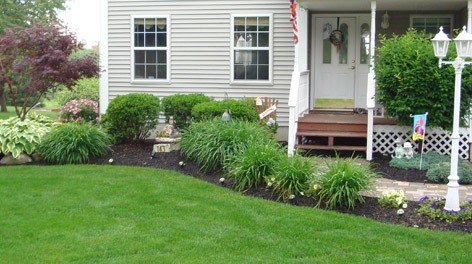Lawn Care 101
 Tips and tricks for mowing, watering, aeration, dethatching and pruning.
Tips and tricks for mowing, watering, aeration, dethatching and pruning.
Mowing Tips
- Don't cut your grass too short. General rule to follow is to not cut more than one third of leaf surface off at any one cutting. By mowing the lawn once a week you will usually follow the guidelines. This will safely leave grass clippings that will quickly decompose and add nutrients back into the soil. Contrary to popular opinion, grass clippings do not add to thatch build up. Grass blades are made up of about 75% water.
- Optimal height for grass is 2 1/2 - 3 inches. Mow at maximum height during the summer and at maximum height at the end of the season. Higher heights usually provide for deeper root system, looks better and is less likely to have weeds invading, particularly crab grass.
- Mowing your lawn in different directions periodically will ensure a more even cut since grass blades will grow more erect and less likely to develop into a set pattern.
- Trimming is not required for a healthy lawn, but it adds so much to the manicured touch. Personally, a lawn just isn't finished unless it's been trimmed.
Watering
- General turf grasses need 3/4"-1" of water per week to maintain green color and active growth.
- Water early in the day when lawns are normally wet from dew. Avoid midday due to excessive evaporation. An exception is late afternoon early evening and night time temperatures don't go below 68 degrees.
Aeration
Aerating your lawn will reduce thatch, loosen compact soil and make it easier for water and nutrients to reach the roots of your turf. Aerating pierces the soil with sharp spikes to allow air and moisture to penetrate down to the root zone.
Dethatching
- Thatch is a layer of living and dead grass stems and roots.
- Dethatching implements passes through grass, dead and living materials is cut, torn loose and deposited onto the surface. Surrounding grass is left intact.
- Compost can/should he raked into piles and discard of.
Pruning
Prune in late fall and early spring when plants are dormant.
